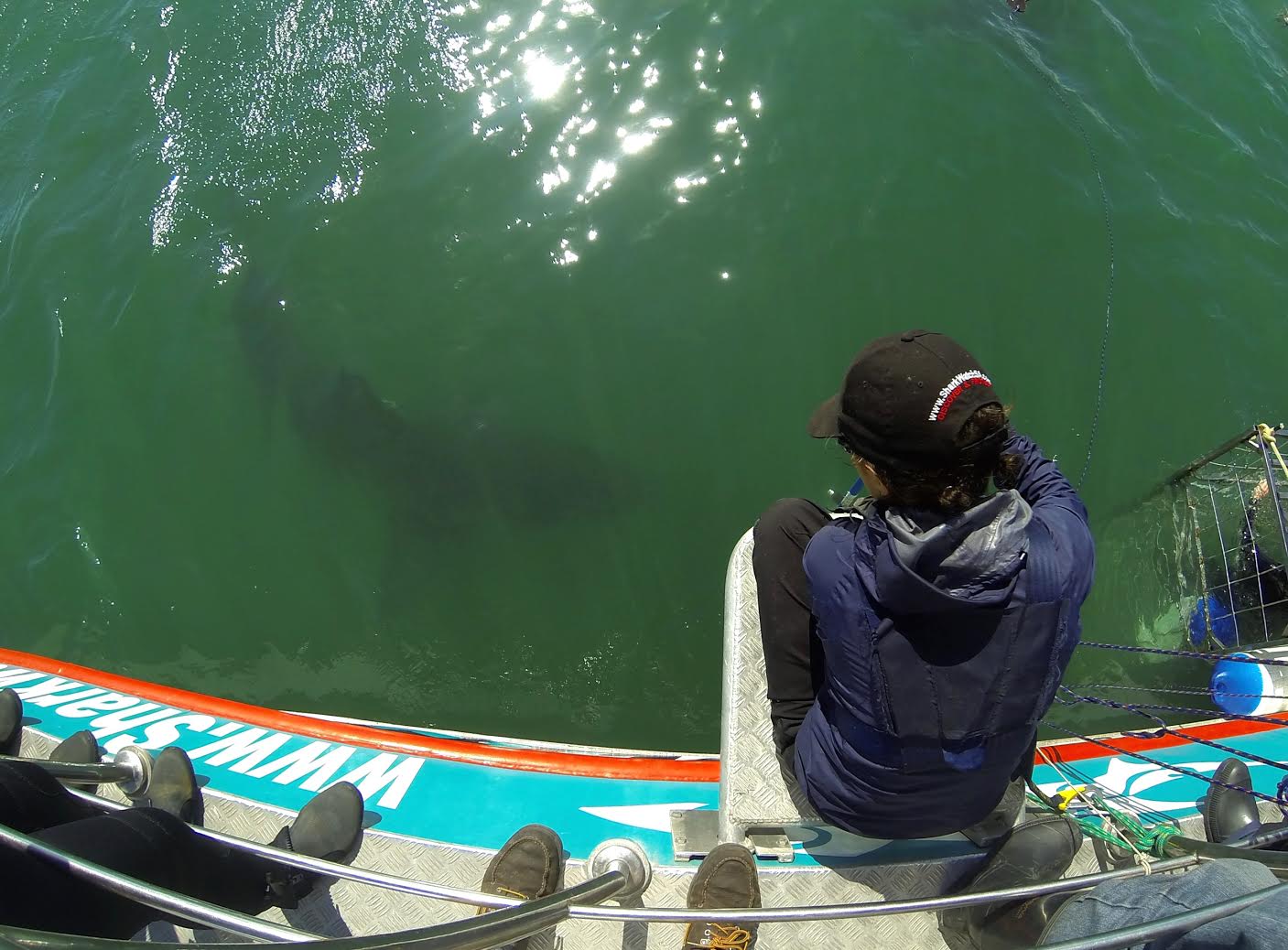Sharks and Lasers!
25th June 2015 | by Georgia FrenchThat’s right, lasers! (though not in an Austin Powers kind of way). In this blog I’ll be describing how lasers can be used to get accurate measurements of free-swimming white sharks.

Getting accurate length measurements is vital for my research as a white shark’s length can effect many aspects of its life, such as how they interact with other sharks, what they are likely to be feeding on and which habitats they may be using.
The official name given to using lasers and a camera to measure an object is laser photogrammetry. This method has been applied to many different kinds of animal, both terrestrial and marine and has been used previously on whale sharks and white sharks. My set-up consists of:
- two waterproof laser pens (http://www.apinex.com)
- a GoPro Hero 3+ camera (gopro.com)
- mounting materials, which, in my case, consist of recycled desks put together by one of the wonderful technicians at my university (http://www.sussex.ac.uk)
Here’s what my basic set-up looks like:
This is attached to a long pole so that I can operate it underwater from the boat

Me perched on my platform on Slashfin using the lasers to measure one of our favourite sharks “Rosie II”.
The theory is, if you can get an image of your shark with the two laser points on it, you can use the laser dots as a size reference, or ruler. If you know that they are 30cm apart, you can use them (and for me, some very handy free software (http://imagej.nih.gov/ij/) to tell you how long the shark is in total.
When I say that my lasers are 30cm apart, I mean that they are set EXACTLY 30cm apart, to the millimetre. Before and after each time I use my laser rig, I check that my laser points are still set precisely 30cm apart using a custom made calibration plate – if, at the end of a trip, my lasers have been knocked and aren’t exactly where they should be, I discard all of my data for the trip, which is upsetting but much better than having wonky data!
I tested my lasers in the UK before taking them out to South Africa earlier this year. My lovely and ever patient partner (thank you!) braved the ocean in February to help me in the initial trials and was much relieved when our local swimming pool agreed to let use their significantly warmer facilities for additional tests. Being surfers, we handily had a variety of watercraft of varying size and shape (some examples below) to test out the lasers.
After measuring our objects by hand and comparing these measurements to those obtained using laser photogrammetry, I’m pleased to announce that our laser results were over 99% accurate!
However…here’s an example picture taken by myself in March this year that highlights some of the difficulties of using this method for white sharks in South Africa.
- the underwater visibility is relatively limited due to high plankton levels and wave action on a sandy substrate, so you need the shark to be nice and close so that you can see it and the laser dots
- white sharks are not small – they very easily exceed the width of the camera frame, especially of they are close enough to be able to see
- white sharks are not flat! They are constantly swimming, which means that they are bending their bodies – not helpful for getting an accurate measurement of their length!
I have some cunning plans as to how to overcome these issues but if I told you what they were before publishing the results, I’d have to…well, you know…beg you not to tell anyone else! Have no fear though – all shall be revealed in good time!
Back to all News




 Laser testing on two differently sized surfboards.
Laser testing on two differently sized surfboards.